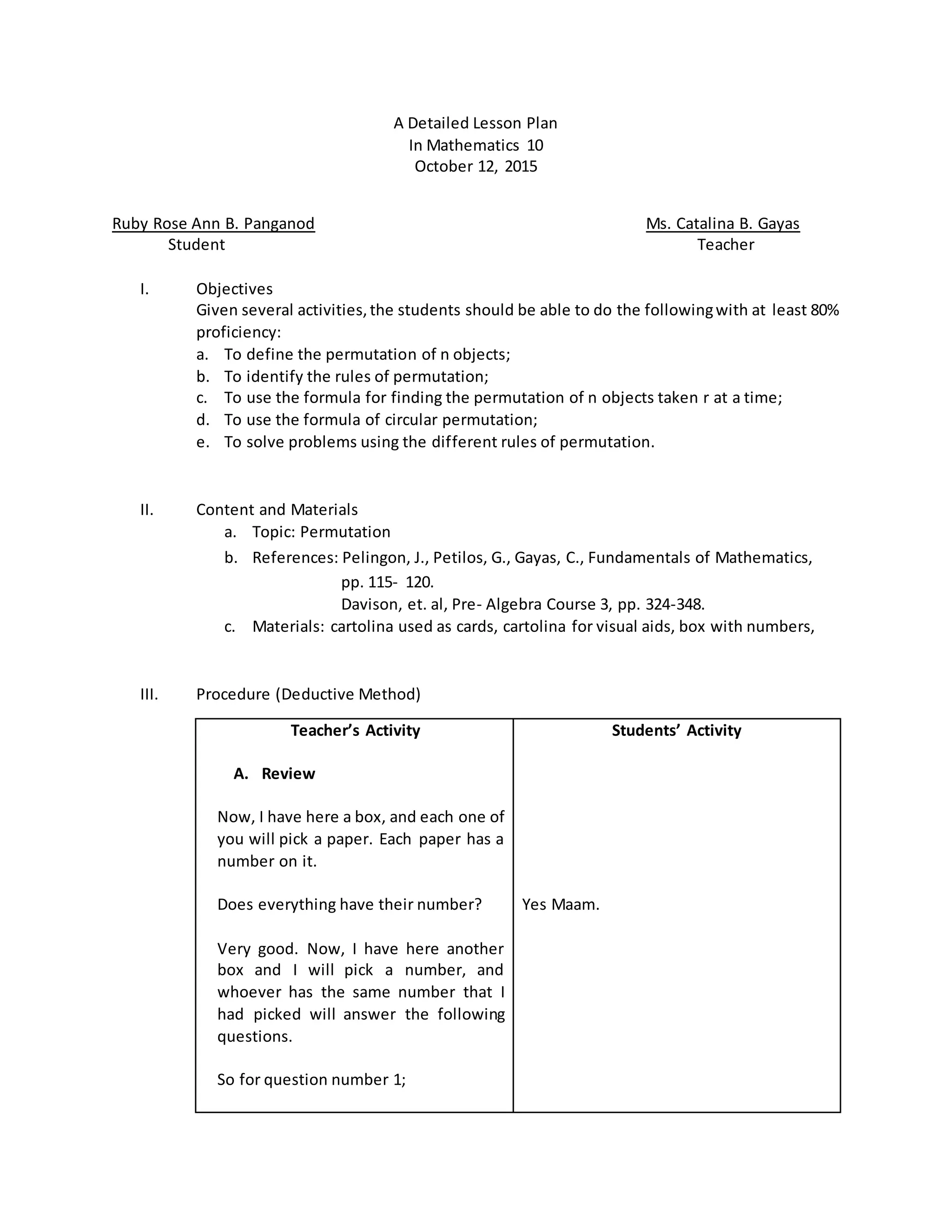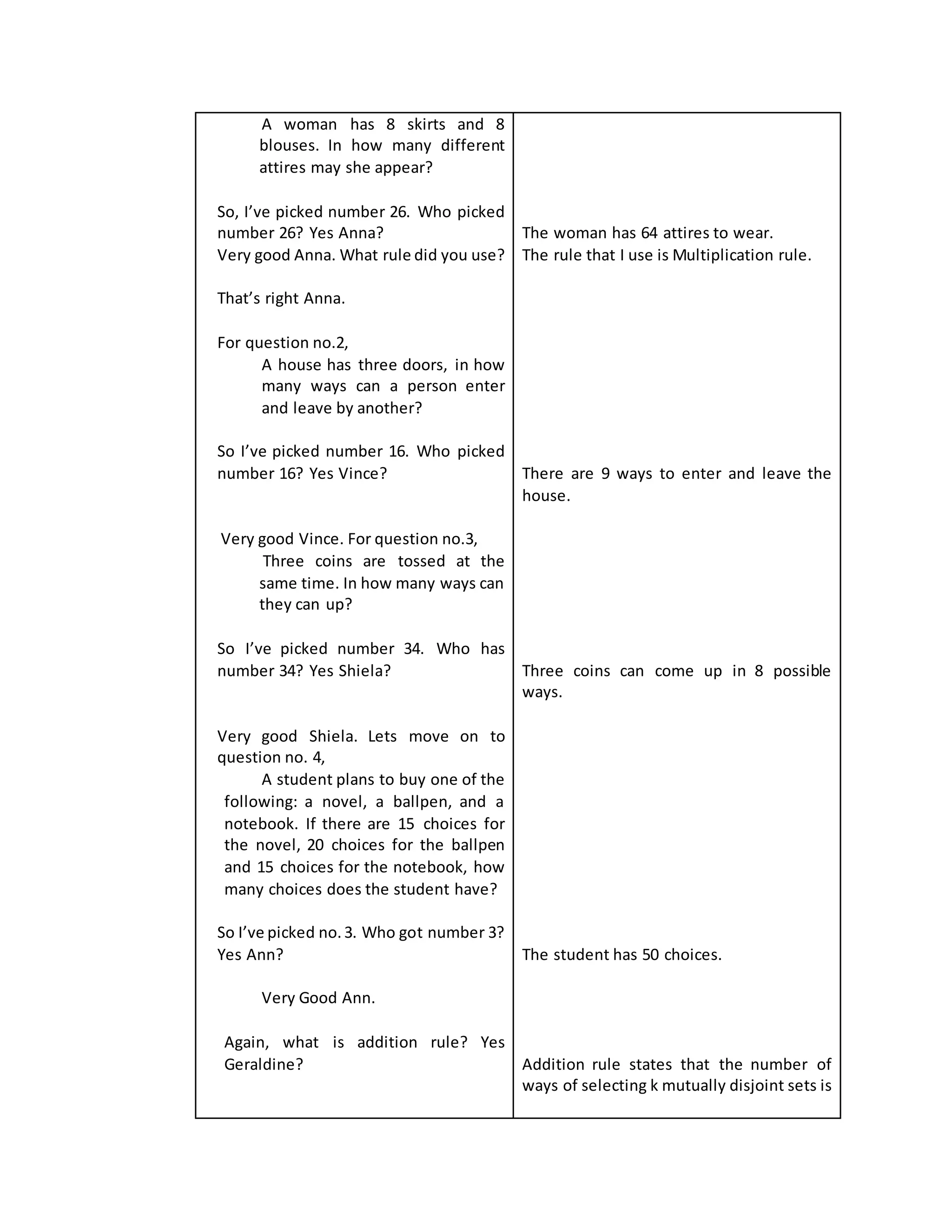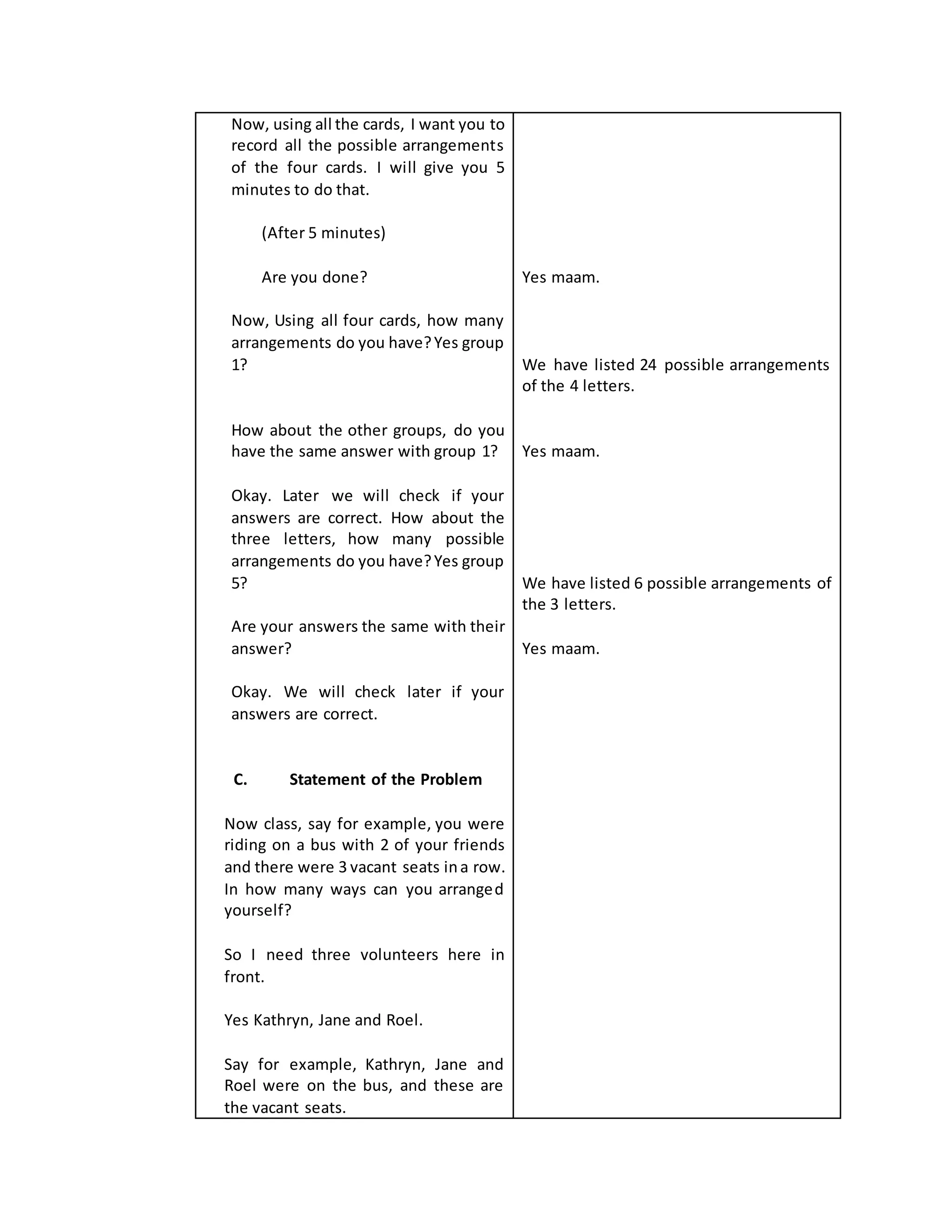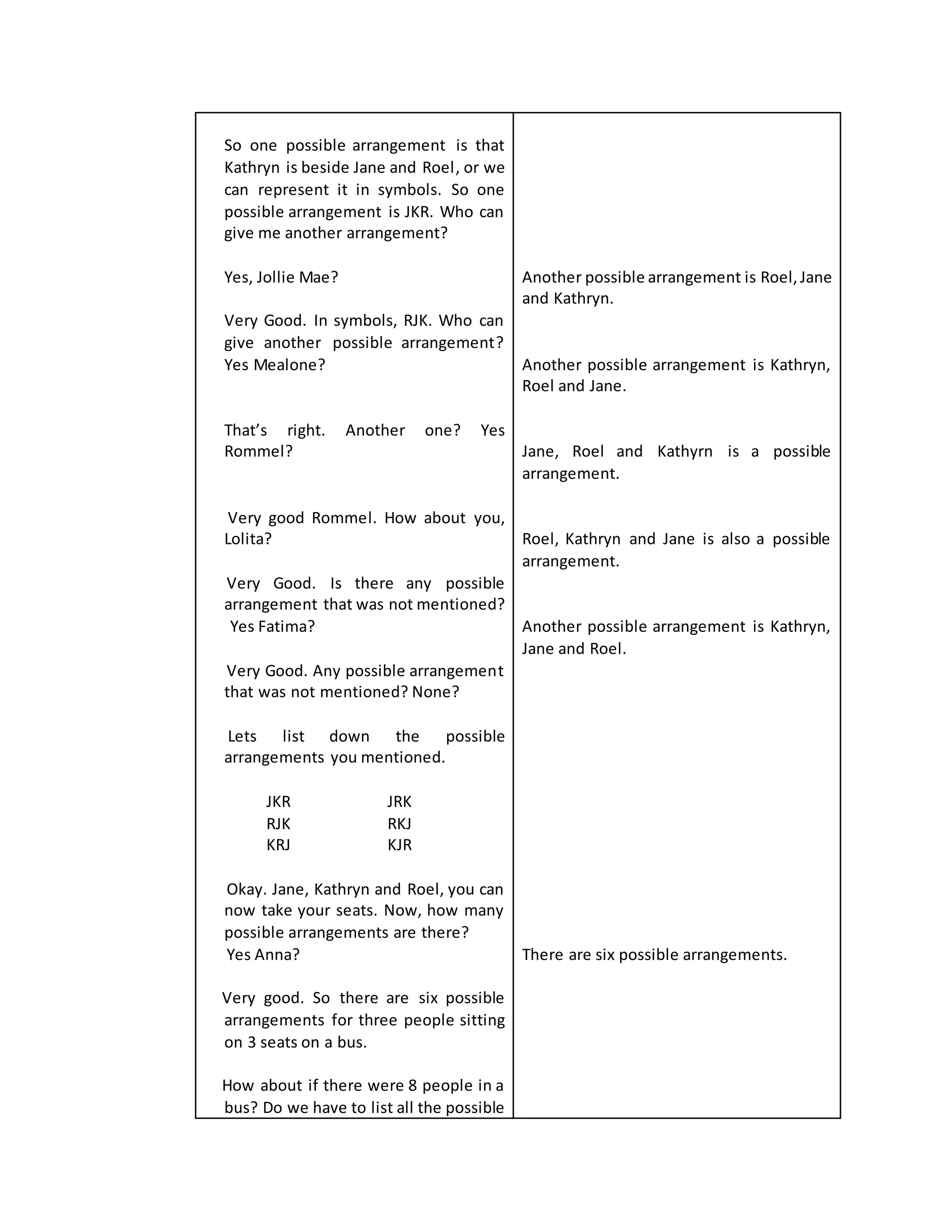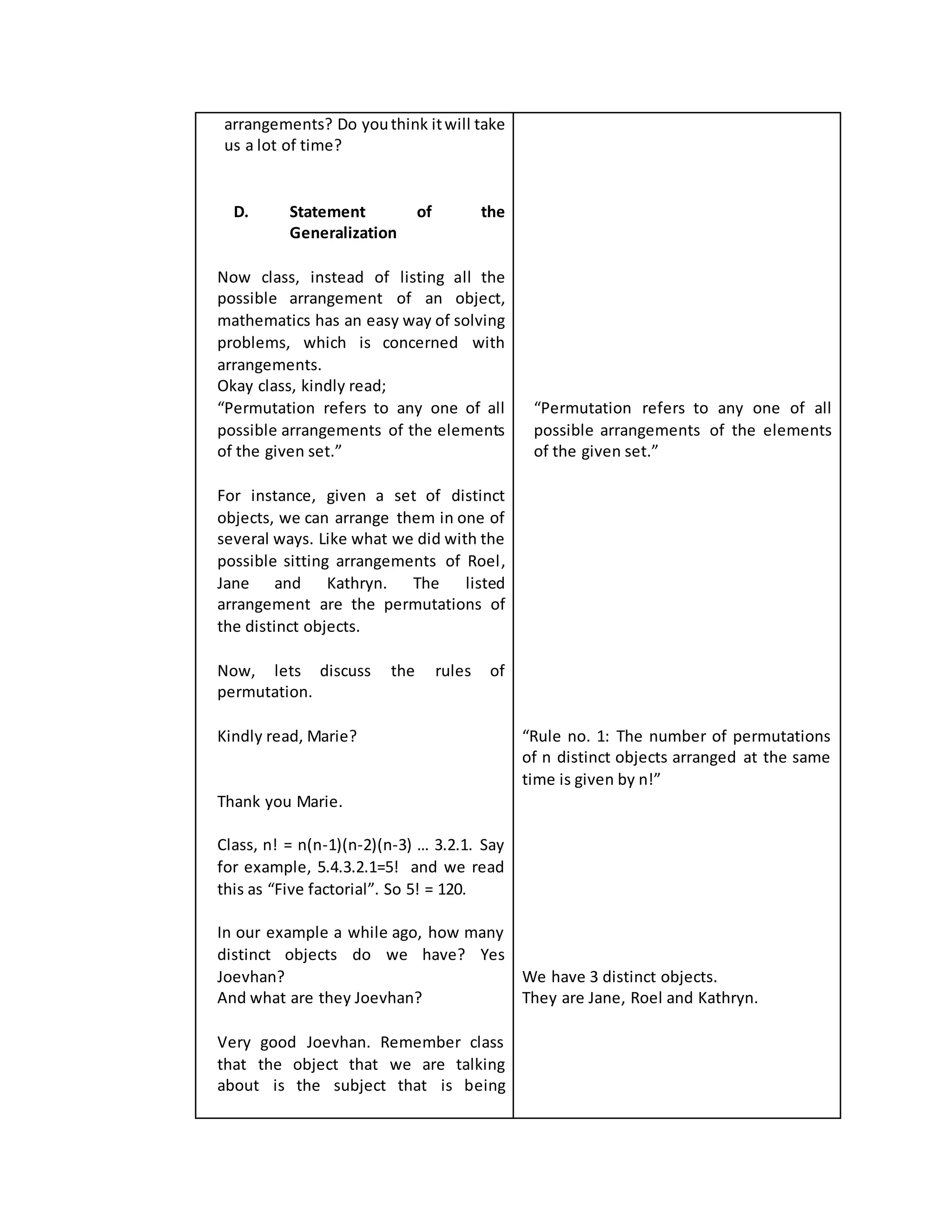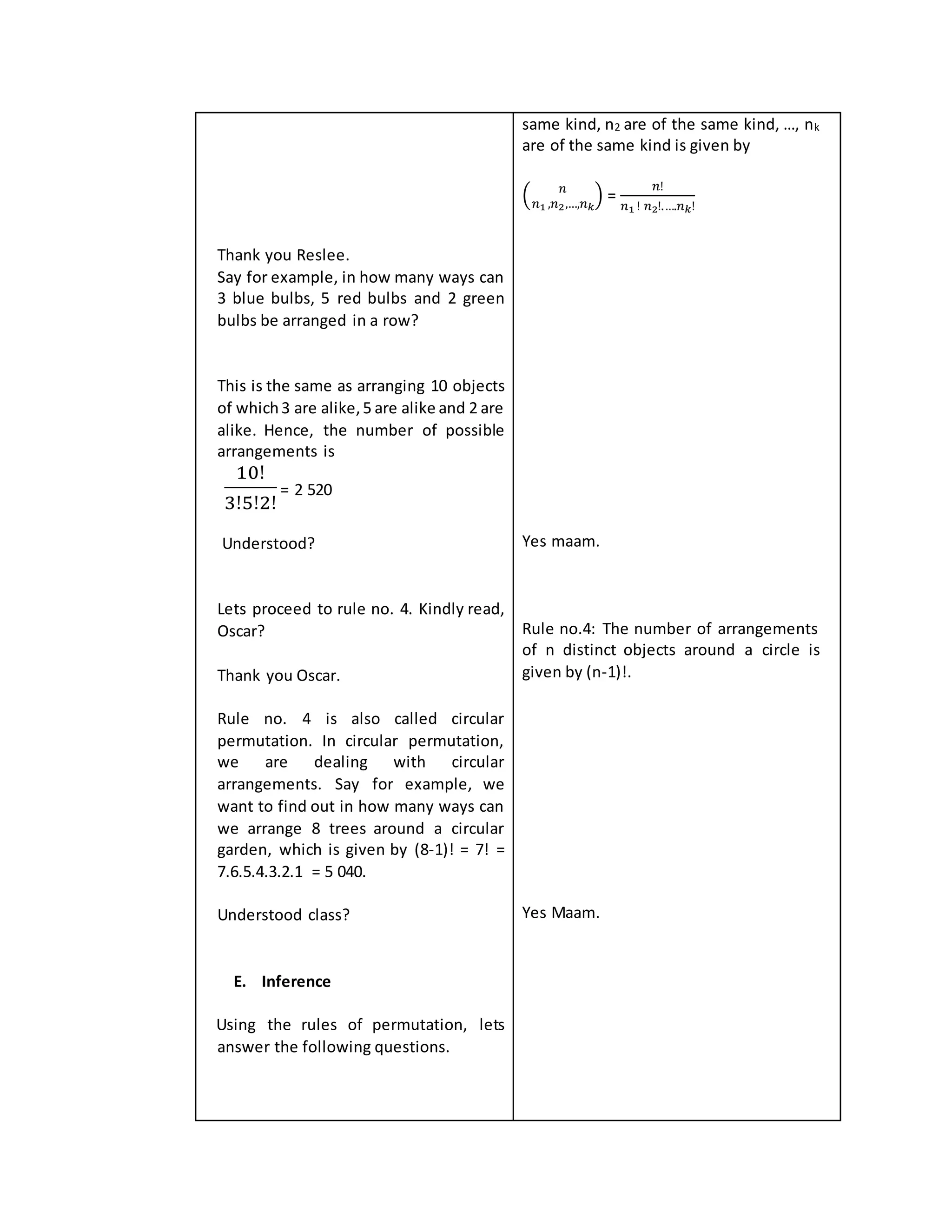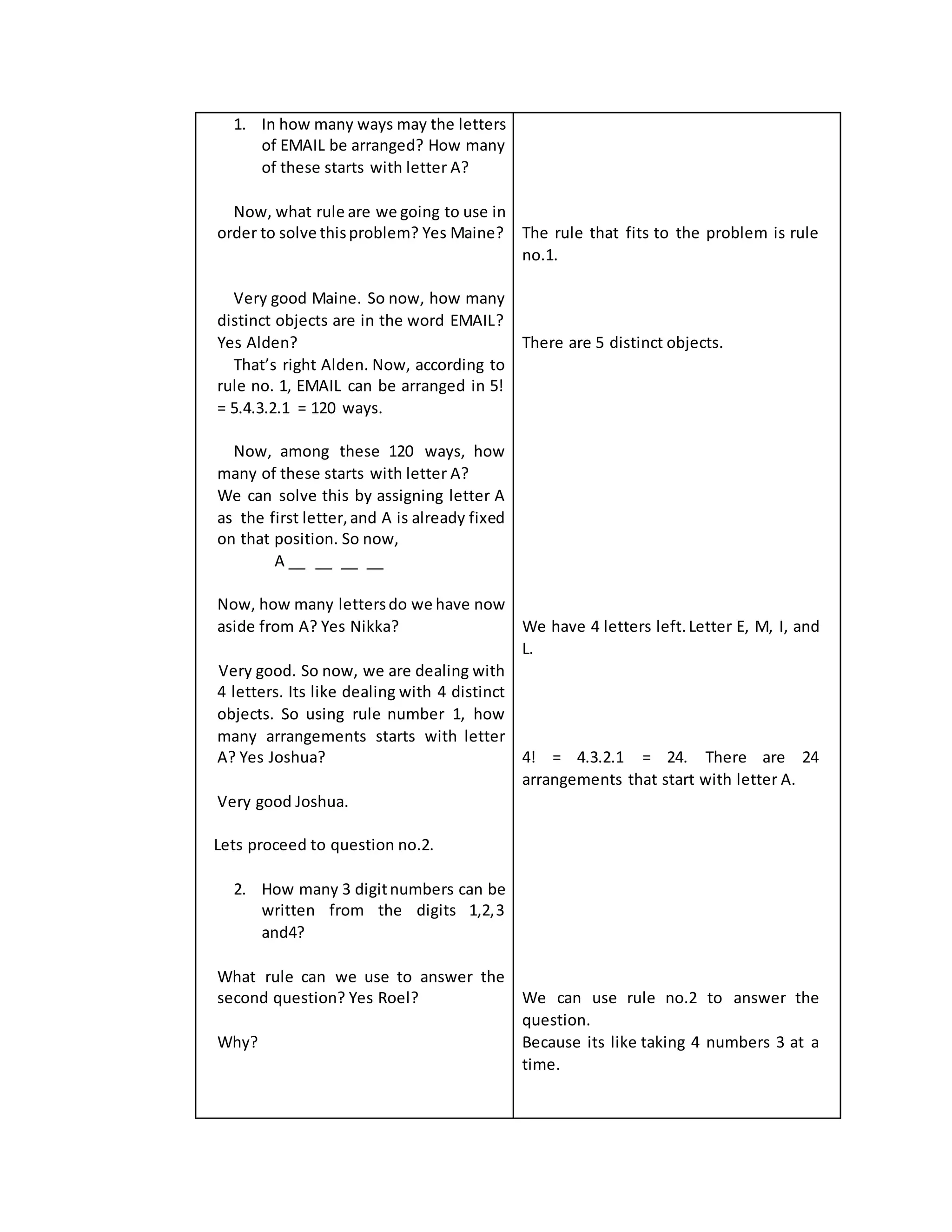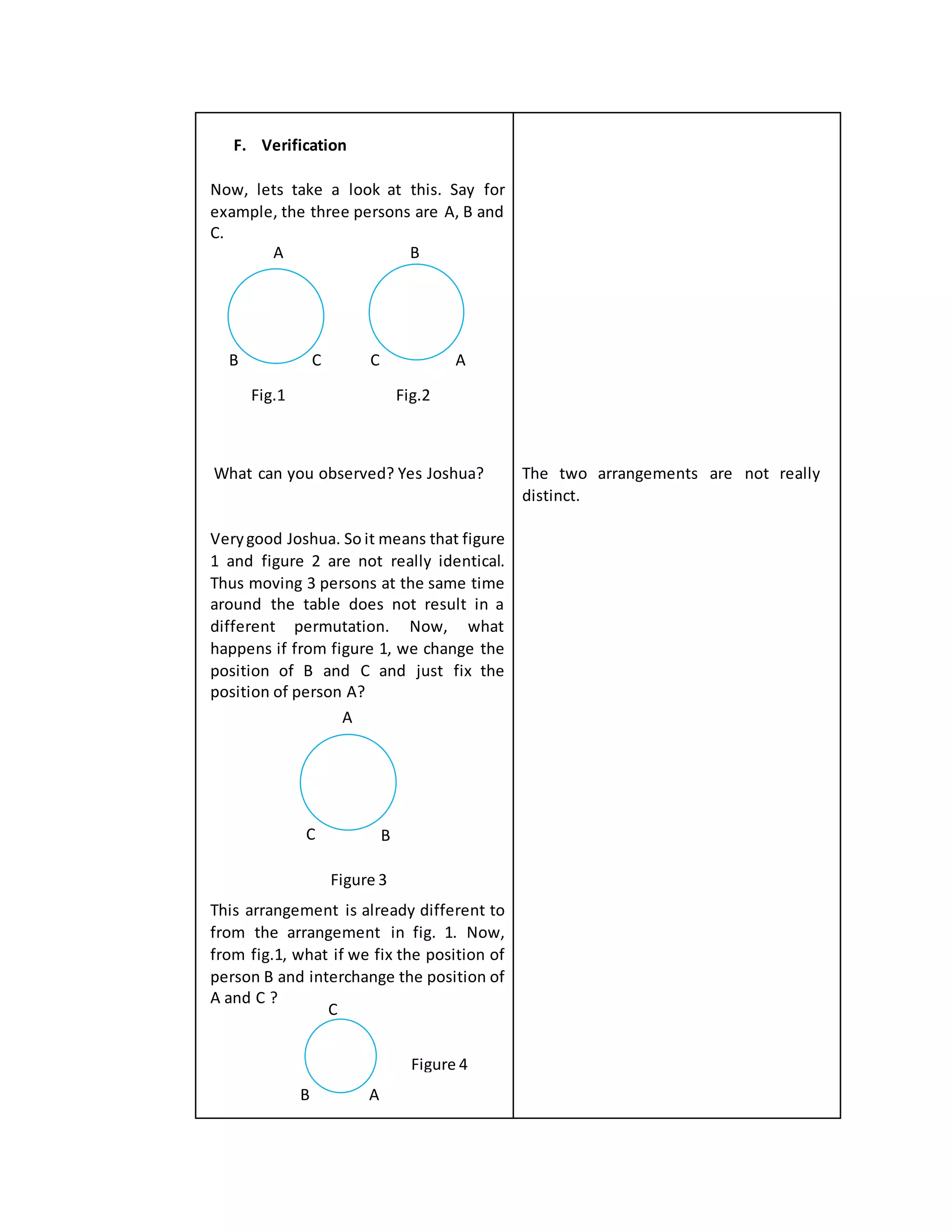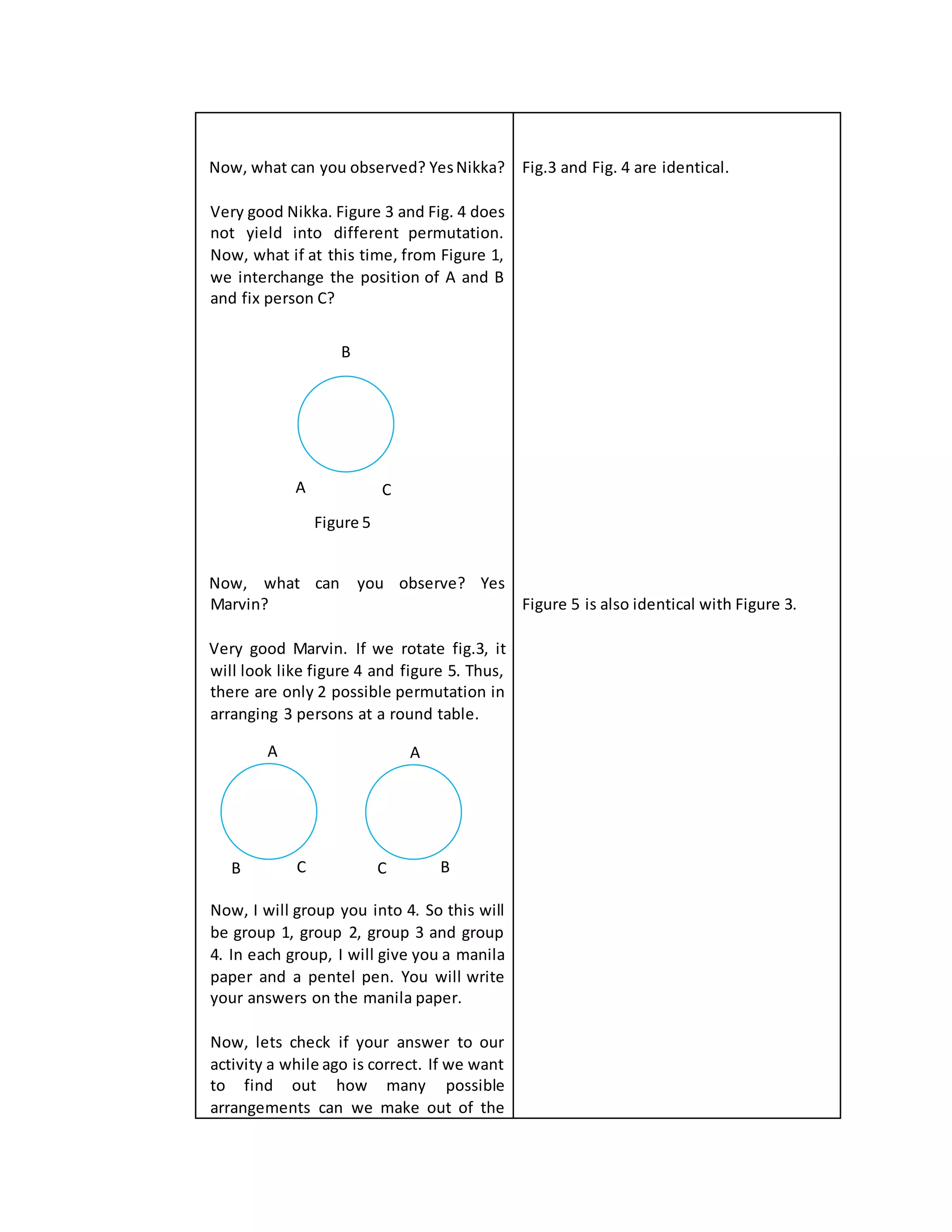The document is a detailed lesson plan for a mathematics class on permutation. It outlines the objectives, content, materials, and procedures for the lesson. The lesson will teach students about permutation rules including n!, nPr, and arrangements of distinct objects. Example problems are provided to demonstrate each rule, and students will complete activities in groups to practice the rules and verify their understanding.
